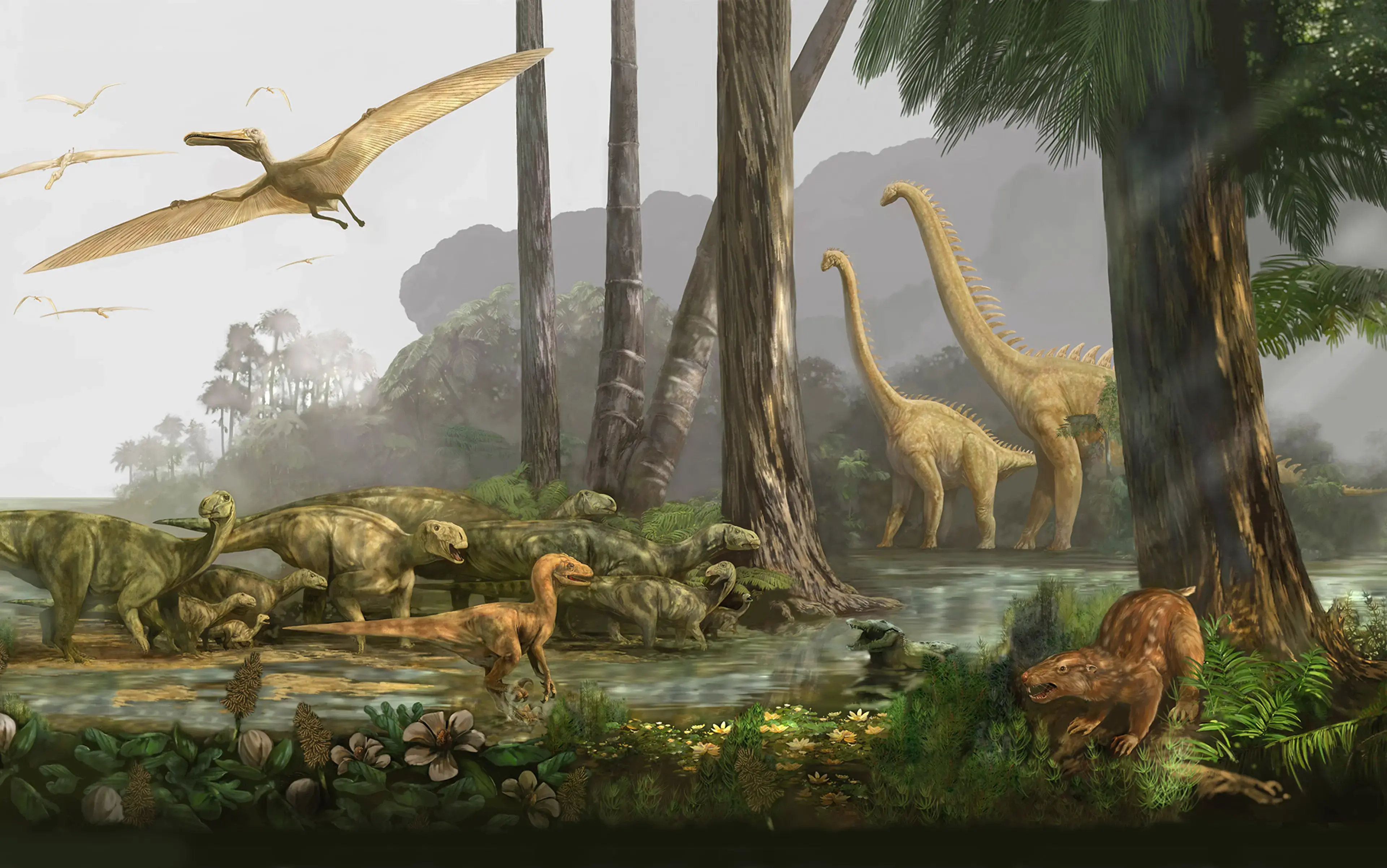Dinosaurs dominated Earth for over 165 million years, but around 66 million years ago, they vanished in one of the most catastrophic mass extinction events in history. Interestingly, while dinosaurs disappeared, other animals like mammals, birds, and crocodiles survived. So, what made dinosaurs die out while other species managed to endure? Understanding the reasons behind the extinction of dinosaurs not only unravels a key event in Earth’s past but also offers crucial insights into species resilience and survival.
The Chicxulub Asteroid: The Triggering Catastrophe
The most widely accepted explanation for the dinosaur extinction is the impact of a massive asteroid that struck Earth near what is now the Yucatán Peninsula in Mexico. The asteroid, estimated to be 10 to 15 kilometers in diameter, created the enormous Chicxulub crater and unleashed an explosion equivalent to billions of nuclear bombs.
This cataclysmic event caused wildfires, tsunamis, earthquakes, and an “impact winter.” The thick clouds of dust and soot blocked sunlight for months, leading to global temperature drops and the collapse of photosynthesis. Without sunlight, plants perished, herbivores starved, and carnivores quickly followed. The global food web disintegrated from the bottom up.
Massive Volcanic Eruptions Worsened the Crisis
In the same period, the Earth experienced intense volcanic activity in the Deccan Traps, a region in present-day India. These volcanic eruptions released vast amounts of lava and toxic gases, including carbon dioxide and sulfur dioxide, which contributed to long-term global warming, acid rain, and ocean acidification.
The combination of asteroid impact and volcanic eruptions created a "double punch" of environmental stress that proved fatal to many life forms, particularly the dinosaurs.
Why Dinosaurs Were Hit the Hardest
Not every animal succumbed to the extinction event. But the majority of non-avian dinosaurs did, and several biological and ecological traits made them especially vulnerable:
- Large body size: Bigger animals need more food. Once vegetation disappeared, large herbivores died out, followed by the carnivores that hunted them.
- Specialized diets: Many dinosaurs had very specific dietary needs, which made them less adaptable in a drastically changed environment.
- Slow reproductive cycles: Dinosaurs laid eggs and had longer lifespans, which made population recovery difficult after mass die-offs.
- Possible cold-blooded physiology: If dinosaurs were cold-blooded or mesothermic, they would have been more susceptible to sudden drops in temperature.
How Some Animals Survived the Mass Extinction
While most large species perished, smaller and more adaptable creatures managed to survive. These survivors shared certain traits that helped them endure the aftermath:
- Burrowing and hiding: Many mammals, reptiles, and amphibians lived in burrows or crevices, protecting them from extreme surface conditions.
- Omnivorous diets: Flexibility in food choices—eating plants, insects, or carrion—helped animals survive when food was scarce.
- Aquatic ecosystems: Marine and freshwater animals like fish, amphibians, and some reptiles were less affected by surface-level devastation.
- Rapid reproduction: Small mammals reproduced quickly and in large numbers, which helped rebuild populations rapidly.
Birds: The Last Surviving Dinosaurs
Fascinatingly, not all dinosaurs went extinct. Modern birds are direct descendants of small, feathered theropod dinosaurs. Their small size, lightweight bones, feathers for insulation, and ability to fly helped them survive. After the extinction event, birds diversified into over 10,000 species, becoming one of the most successful animal groups on Earth.
What the Dinosaur Extinction Teaches Us
The extinction of the dinosaurs is a stark reminder of how quickly life can change due to global catastrophes. It teaches us about species vulnerability, ecological balance, and adaptability. Today, scientists warn of a potential sixth mass extinction driven by human activities—climate change, deforestation, pollution, and habitat destruction.
By studying past extinction events, we can better understand the importance of biodiversity and resilience, and what it takes for life to persist through disaster.
Further Reading and Scientific Resources
Leave a comment
Your email address will not be published. Required fields are marked *


